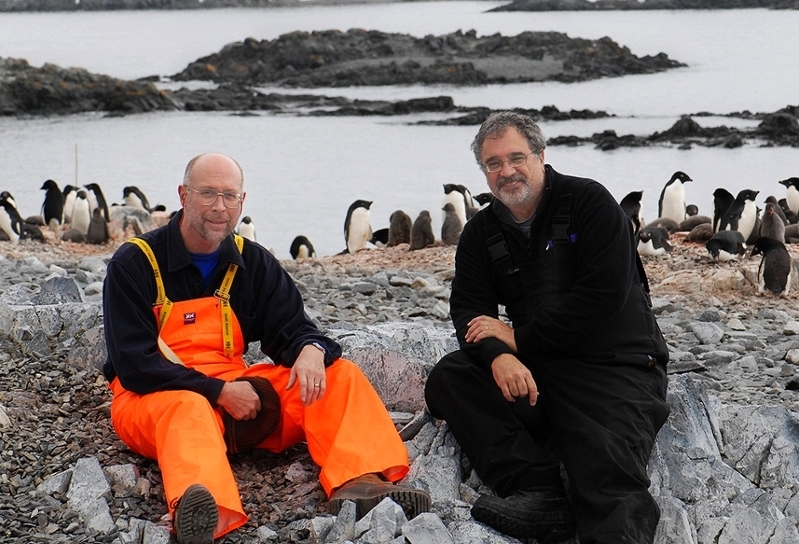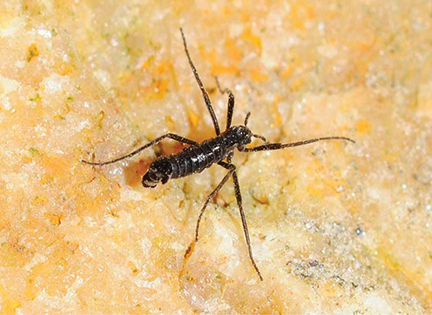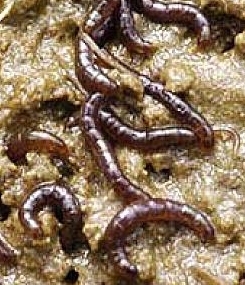

Richard Lee part of first genome sequencing of an extremophile
The midge Belgica antarctica, the only insect native to Antarctica, has the smallest insect genome sequenced to date
Written by Susan Meikle, university news and communications, meiklesb@MiamiOH.edu.
The Antarctic midge, Belgica antarctica, has the smallest genome yet reported for an insect. The recently sequenced genome — the first for an Antarctic animal — was completed by a team of researchers that includes entomologist Richard Lee, University Distinguished Professor of Biology at Miami University.

An adult male Antarctic midge, Belgica antarctica, about 3 mm long. The larvae of this species, only 2-7 mm long, represent the largest animlas that remain on land year-round on the continent (photo by Rick Lee).
The midge — the only insect native to Antarctica — “has really stripped down its genome to the bare essence,” said David Denlinger, Distinguished Professor of Entomology at Ohio State University and senior author of the study.
The genome has 99 million base pairs, compared to 105 million for the body louse (one of the smallest) and 3.2 billion for humans.
It lacks junk DNA and repeat elements that don't make proteins, which are found in most animal genomes.
As the first polar insect and first freeze-tolerant insect to be sequenced, B. antarctica offers a new opportunity to probe the genome architecture of an extremophile, say the study authors.
Their research, "Compact genome of the Antarctic midge is likely an adaptation to an extreme environment," was published in Nature Communications.
The pared down genome may explain how the midge has been able to survive in its harsh environment.
B. antarctica spends its two-year larval stage frozen in the Antarctic ice for as much as six months at a time, before emerging for 10 days to mate and lay eggs on the surface before dying.
It has unusual survival mechanisms including the ability to tolerate freezing and extensive dehydration, surviving the loss of 70 percent of their body water, Lee said. Most animals won't survive losing more than 20 percent.
Though the genome is surprisingly small, the researchers found an abundance of genes associated with development, regulation of metabolism and responses to external stimuli, which may reflect adaptations for surviving in this harsh environment.

Antarctic midge larvae (photo by Rick Lee).
The midge can shut off about 25 percent of its genes when it enters a dormant state, such as when it is encased in ice and dehydrated for months, Lee said. It turns them on when it’s time to wake and mate.
“By having the genome and knowing the sequence, we can actually go in and take a look at those genes and correlated proteins that are being turned on and off” as the midge is exposed to different stresses, he said.
As the only insect species native to Antarctica, B. antarctica offers a powerful model for studying responses to extreme temperatures, freeze tolerance, dehydration, osmotic stress, ultraviolet radiation and other forms of environmental stress, say the study authors.
The genome provides a foundation for studying extremophile biology and insect genome evolution.
The research could one day lead to figuring out how to freeze and later thaw human organs for transplantation and other medical applications.
The study authors include Lee, Denlinger and Nicholas Teets (Miami '07); Joanna Kelley, lead author, Stanford University and Washington State University; Justin Peyton, Ohio State University; Anna-Sophie Fiston-Lavier, Universite Montpelier; Muh-Ching Yee, Stanford University; Spencer Johnston, Texas A & M University; and Carlos Bustamante, Stanford University.
